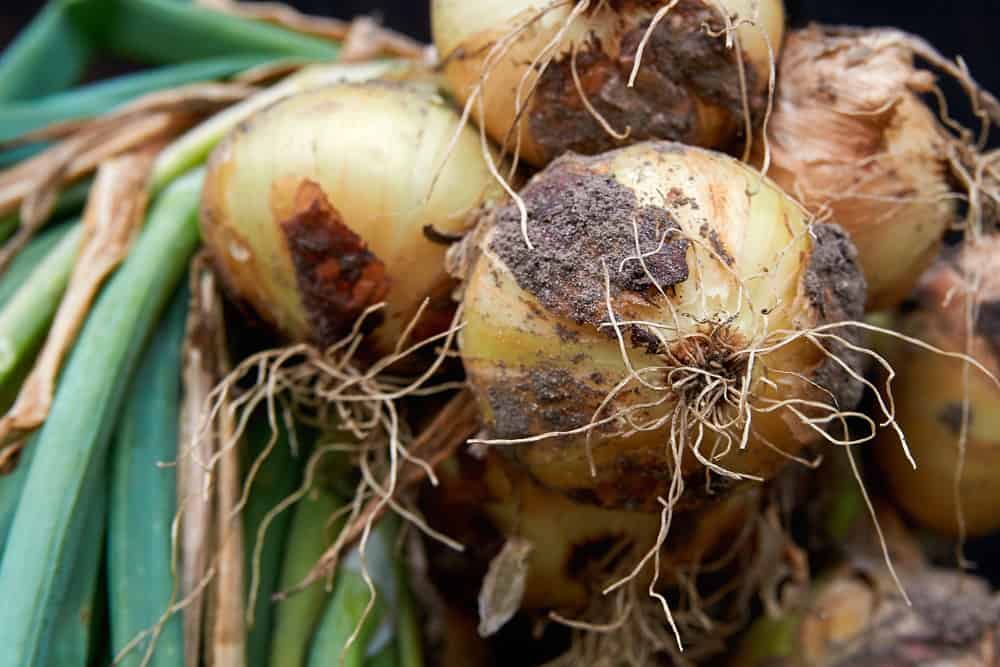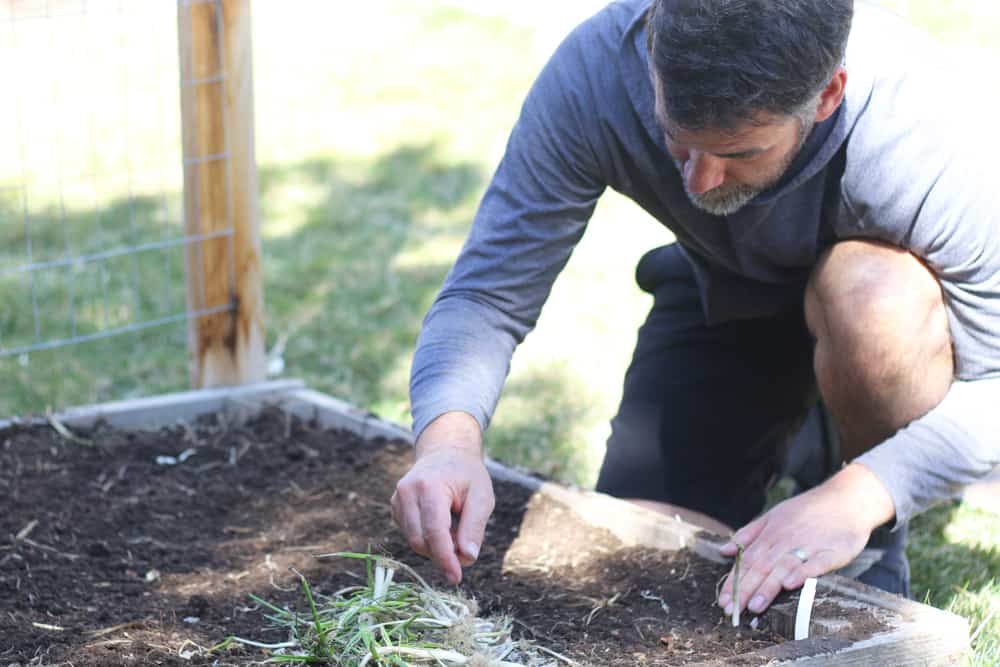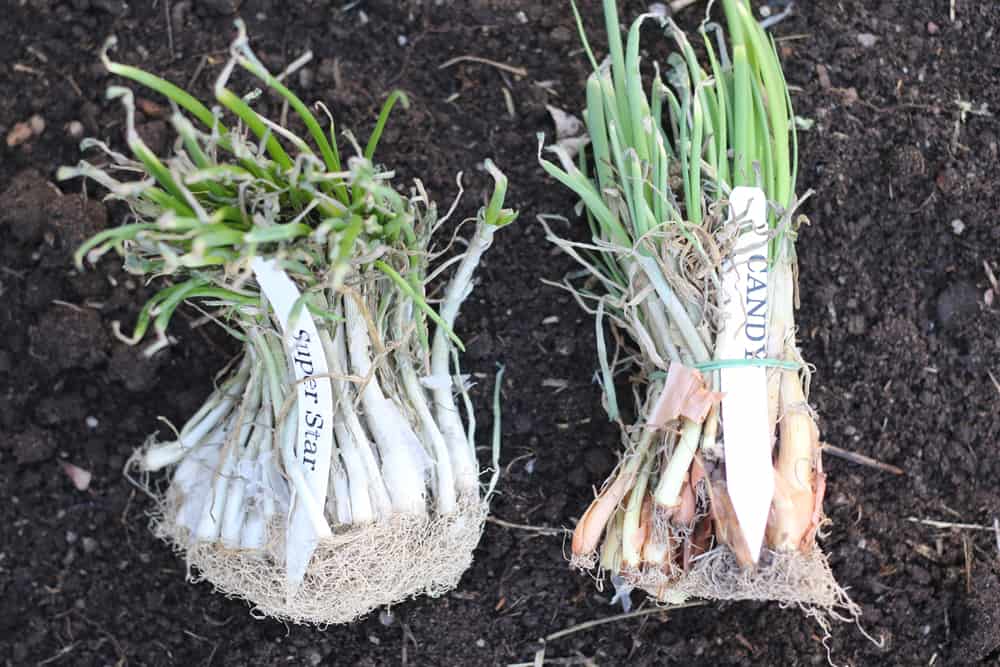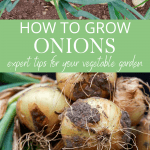How To Plant, Care For & Harvest Onions In Your Garden
From onions starts to harvesting, we share the best tips for growing your own onions. Whether you have raised garden beds or containers, growing onions is easy and you can enjoy a successful onion harvest with these expert tips.

Disclosure: This post contains affiliate links, which means if you make a purchase through these links, we may receive a small commission at no extra cost to you.
When Jeremy first started planning the garden, I wasn’t terribly excited about taking up garden space with onions. The onion ordering and planting happened anyway, which was a good thing. We now have a garden bed dedicated solely to onions.
I had no idea how tasty garden onions would be, especially in a salad. They are SO much better than the ones I was used to from the store.
Onions make a great addition to the home garden and require relatively little growing space. Onion varieties are either short-day, long-day or day-neutral. You want to make sure you grow the appropriate type for your gardening zone.
Day-neutral varieties are for any zone, but work best in zones 5 and 6. Only grow long-day onions in zones 6 and below, while short-day onions are for gardeners in zones 7 and above.

Planting Onions
You have three main options for planting onions:
- Start seeds indoors Growing onions from seed is the most economical option and you will have a broad choice of varieties, but requires extra effort. Learn how to start seeds here.
- Plant onion sets These are small onions that will grow into full-sized plants.
- Plant dormant onions These are small plants that have been pulled from the field at an early stage of development. We prefer to plant dormant onions. They develop the most rapidly and produce a high quality crop.
When to plant onions? You can plant onions in the garden in early spring, 4-6 weeks before your last frost.
Prepare your bed for planting Add a good dose of compost and organic granular fertilizer high in nitrogen (e.g. blood meal). One key to producing large onions is not to plant too deep. Whether you’re planting sets or plants, don’t bury them more than 1” deep. For large onions, you want final spacing of 4”, but you can plant 2” apart and remove every other plant throughout the early part of the season when they are scallion-sized.
Caring For Onions
- Soil: Onions prefer consistently moist soil. Mulch with straw or another organic material and do not let soil dry out completely between waterings.
- Sun: Onions grow best in full sun.
- Supplement: Fertilize onions every 3-4 weeks with organic liquid fertilizer high in nitrogen.
- Pests: We always cover our onions with row covers early in the season because we have problems with the onion fly, whose larvae eat the developing onions. If you see maggots when you pull your scallions, you have a problem. They can severely decimate a patch of onions, but are completely controlled by the use of row covers. Just make sure to get the row covers down early in the spring.
Harvesting Onions
A scallion is a young onion comprised of a long green stalk and a white base that has not fully developed into a bulb. Harvest scallions whenever they are large enough—they can be used as soon as you pull them from the ground.
When your onions have matured, the foliage will start to flop over and turn yellow. Once this occurs you can push down any remaining upright foliage to further encourage the plant to enter dormancy. Leave the plants like this until the tops have completely or mostly turned brown or yellow (usually about 2 weeks). At this point, you can pull them out of the soil. Unless you are going to eat them right away, you will need to cure onions so they will last in storage.
Curing Onions
If you want to store onions, they need to be cured. Immediately after harvest lay them out in a single layer in a shady area of the garden, an outdoor shed, or a room indoors. The ideal temperature range is between 68-82° F.
Your goal is for the plants to dry out completely. The foliage should be brittle and the skins on the onion should be totally dry. How long this takes depends on conditions, but it is usually about 2-3 weeks. At this point you can clip off any remaining foliage and store them long term in a mesh bag or wire basket (ventilation is key). Optimal storage temperature are 32-40° F.

Our Favorite Varieties Of Onions
We grow day-neutral varieties in our zone 5 garden.

